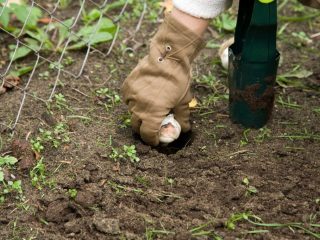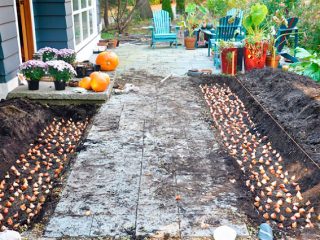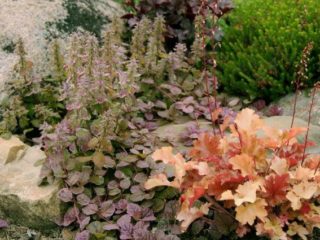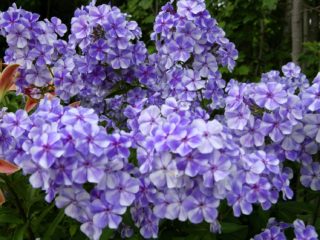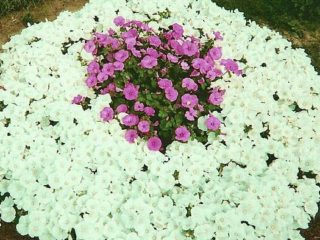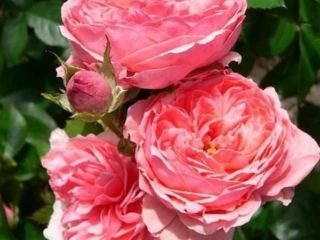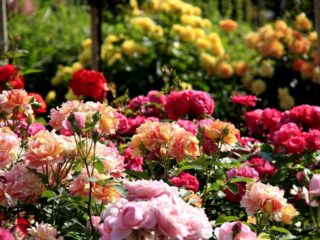Content
Hyacinths reproduce by children, scales, leaves and even seeds. Growing them at home is quite simple, especially if you use vegetative methods. When growing from seeds, you will have to work harder, and flowering will begin only after 5-6 years. However, the new flowers can be very interesting, with unique colors that don't resemble their parents.
Rules for propagating hyacinths at home
Hyacinths are propagated mainly using bulbs. To do this, they need to be carefully selected by appearance:
- without mechanical damage;
- without rot and mold;
- dense, not softened;
- approximately the same size.
In most cases, hyacinths begin to reproduce in the spring. But the separation of the children from the bulbs is planned for the dormant period, i.e. July. The tubers themselves are sown only in the fall, so that they have time to adapt to winter and begin to grow in early spring.
Another important rule for propagating hyacinths is that during the first 2-3 years, seedlings are recommended to be grown at home. As soon as they get stronger, they can be moved to open ground.It is better to do this in early May.
How does hyacinth propagate at home?
Hyacinth propagation methods are divided into two groups:
- Vegetative.
- Generative.
In the first case, they work with bulbs. From them, children, individual parts (scales) are obtained, or tubers of adult hyacinths are simply transplanted into open ground or into a flower pot. Another option for vegetative propagation is from leaves.
You can grow hyacinths from seeds (generative propagation method). In this case, they will bloom only after 4-5 years, and sometimes even after 6-7. But gardeners can get new varieties that are not similar to common varieties.
Propagation of hyacinths by bulbs
The easiest way to propagate hyacinths is from bulbs. The main difficulty is that the increase in children is small - often 1-2 per year, less often up to four, occasionally up to eight from one tuber. At the same time, propagation by this method is the simplest, since it does not require much time and effort. The new plants are a 100% copy of the mother plant; they retain all the characteristics, including the size and color of the flowers.

For propagation, only healthy, dense hyacinth bulbs are taken
Propagation of hyacinths by children
To obtain children, it is necessary to separate them from the mother bulb during the summer dormancy period, i.e. after flowering. You need to start working when the flower stalks have completely withered and the bush will no longer form new buds. The plant is dug up and separation begins.
If the process goes well, each baby is raised individually. If they are difficult to separate, there is no need to break them - it is better to plant them together with the mother tuber. The sequence of actions is as follows:
- Select dense bulbs without damage, rot, or softening.
- Separate the children.
- Store in the basement or refrigerator.
- At the end of August or at the beginning of September, plant in open ground according to the 5*15 cm pattern. The depth should be three times greater than the tuber.
- Sprinkle with soil and water.
- When frost sets in, mulch thoroughly.
- At the end of March, remove the cover layer, then fertilize.
You can also raise children at home. In this case, they are planted in separate pots at the same depth. In the first year of propagation, all buds are removed so that the green part of the plant becomes stronger. The next season, the seedlings are transferred to open ground; it is better to do this in early May.
By cutting the bottom
At home, you can propagate hyacinths by cutting out the bottom. This method is often used in cases where it is necessary to obtain a large amount of planting material. Work begins in late spring or June and July. The instructions are:
- Select healthy, dense bulbs without mechanical damage, traces of mold and diseases.
- Using a sharp knife, make a wedge-shaped cut at the bottom.
- A division is obtained with one central bud and a bottom.
- The cut is treated with charcoal powder.
- Transplant into a container with perlite.
- Cover with film with holes.
- Place in a warm place (it is desirable that the temperature is consistently above 25 degrees).
- During propagation, water regularly, preventing the soil from drying out.
- After three months, babies will appear on each bulb.
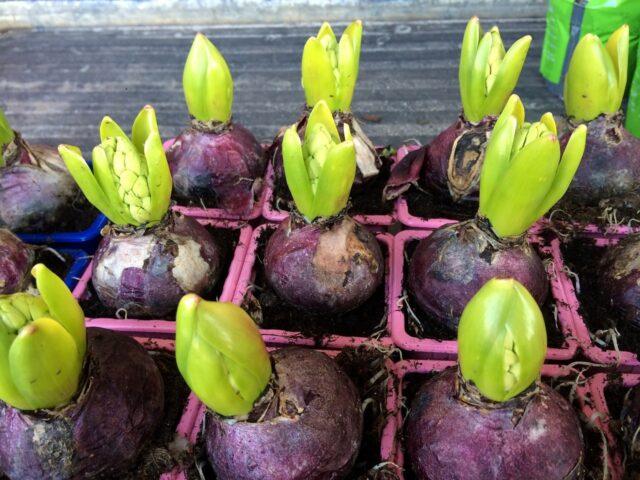
For successful propagation, plants are grown at temperatures above room temperature.
If you start breeding before mid-July, the young bulbs can be immediately transplanted into a flowerbed (without separating them from the mother). For the winter they are carefully mulched.If autumn has already arrived and frost is approaching, the bulbs are stored in the refrigerator and then transferred to the ground in the spring. Moreover, when planting, they are separated from the mother tuber.
Bulbous scales
Another way to propagate hyacinths in open ground is by growing them from bulbous scales. Any variety can be propagated using this method, and even a novice gardener can cope with the task. For propagation, only scales of mature bulbs are used. The algorithm of actions is as follows:
- Take healthy, fairly large tubers with a diameter of 5 cm.
- Shorten at the top by a third.
- Cut longitudinally (vertically) into eight identical fragments so that each of them has part of the bottom left.
- The next stage of propagation is treating the cuttings in a pink solution of potassium permanganate or fungicide. Instead, the cuts can simply be sprinkled with charcoal.
- Place perlite or river sand in a small container and moisten it.
- Then spread the divisions over the surface.
- Cover with film and make several holes.
- Place it on the windowsill. The place should be well lit and warm.
- Water daily in small quantities.
With this method of propagation, the divisions will sprout in 3 or 4 months. Immediately after this, they can be transplanted into individual containers.
Seed method
This method of propagation is more labor-intensive; moreover, it is not always possible to obtain plants identical to the maternal ones, since during pollination the genes are distributed randomly. In gardening practice, this method is used much less frequently. Although it also has an advantage - you can get a unique flower with an interesting, rare color.
Seeds can be sown both in open ground and for seedlings. In the first case, work begins 3-4 weeks before frost.Depending on the region, it is recommended to propagate hyacinths by seeds from late September to mid-October.
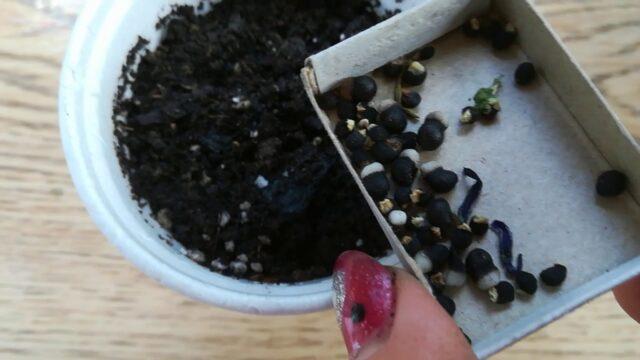
Hyacinth seeds are quite large and black in color.
When sowing in the ground, proceed as follows:
- A month in advance, they prepare a flower bed - clean the area, dig up the soil and cover it with humus or peat in the amount of 5-7 kg per square meter.
- To properly propagate the plant, mark several furrows 1-2 cm deep at intervals of 30 cm.
- Sprinkle the seeds generously (some of them will not sprout), sprinkle with a small layer of soil without compacting them.
- Then carefully water with settled water, mulch with straw, hay and other dry materials. The height should be large -
minimum 20 cm.
- The following spring, by mid-April, the first shoots appear. For proper propagation of hyacinths, it is recommended to immediately give them complex fertilizer and then apply it monthly.
- The plants can be transplanted to a permanent location after a year; work is planned for April.
Seed propagation is also available at home. In this case, they are sown in pots or general containers in mid-October. The soil should be fertile and loose; it can be made up of peat, turf soil and sand (1:1:1). I sow to a depth of no more than 2 cm.
After this, the containers are placed in a cool, dark room, for example, in a basement or on a balcony (covered with a cloth to block light). In mid-March, the containers are transferred to the windowsill and watered regularly. Then superphosphate is periodically given. At home, they continue to grow for a whole year, after which they are transplanted into open ground.
This is the norm for hyacinths and many other crops, so there is no need to worry about the lack of buds in the first years.
Propagation of hyacinth by leaves
Hyacinth in the garden also reproduces by leaves. This is a relatively simple vegetative method. To properly propagate plants, you should proceed as follows:
- Cut off two full leaves down to their bases.
- Cut several cuttings from them so that each is at least 6 cm long.
- Place them in a solution of a growth stimulator, for example, Zircon, for half an hour.
- Plant in wet river sand, placing at an angle of 45 degrees. To properly propagate flowers, the distance between cuttings should be approximately 10 cm.
- Cover the top with a bag and place in a lighted but cool place (temperature 15 degrees).
- Water regularly without over-wetting the soil.
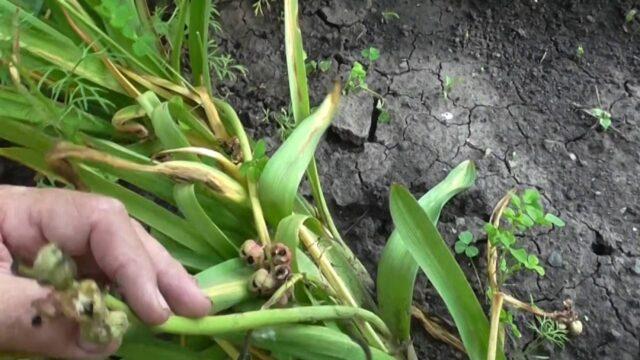
Reproduction by leaves allows you to get an exact copy of the mother hyacinth
The roots form quite quickly - they will appear in about two months. At the same time, leaves and the rudiment of the bulb are formed. At this stage of propagation, the shelter is removed, then grown indoors for 2-3 years. After this, the plants are transferred to open ground, and replanting is planned for April or May.
Further care
After propagation, caring for hyacinths comes down to following several rules:
- Flowers are not watered very often - if there is no rain at all, water is given once a week. Moreover, the soil should get wet at least 15 cm deep.
- Fertilizers are given several times a season. In April, feed with ammonium nitrate or urea (20-25 g per 1 m2). During the formation of buds, potassium sulfate is added (20 g per 1 m2) and superphosphate (35 g per 1 m2). A similar composition is added at the end of flowering.
- To ensure successful propagation, hyacinths are replanted every 2-3 years. This must be done in the fall to prevent the bulbs from growing prematurely.
- The soil is loosened as necessary. It is recommended to do this after heavy rain or heavy watering. Simultaneously with loosening, weeding is carried out.
Conclusion
Hyacinths are not very difficult to reproduce. If you choose vegetative methods (from bulbs or leaves), even a novice summer resident can cope with the task. At the same time, it is important to adhere to the scheduled deadlines, ensure watering and fertilizing. The video tells about the peculiarities of hyacinth reproduction.
